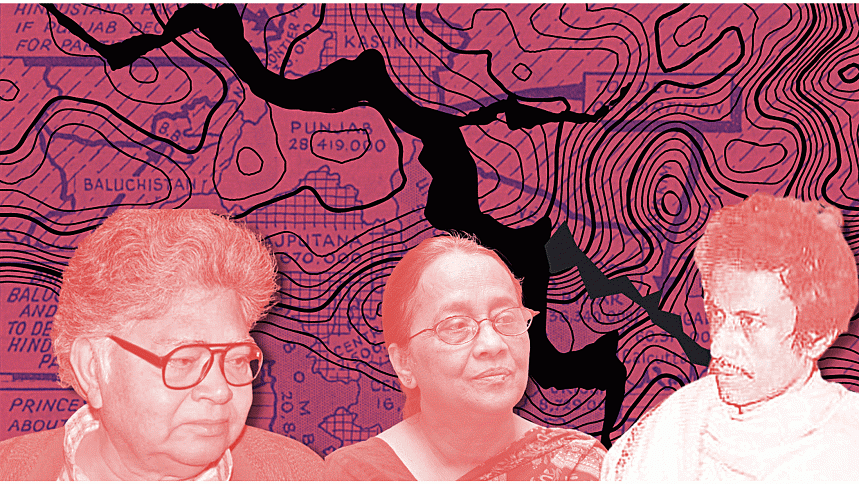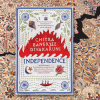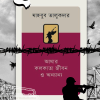Partition and Bangladeshi literature

Their apartment was located on the ground floor of a three-storied building whose yellowish paint looked as if it was peeling off on its own. My friend's father's two-bedroom government quarter housed nine people—the patriarch and his wife, four sons, and three daughters. Three cots, one of which was placed near the passage between the kitchen and the bedroom, were not enough for the entire family. They were distributed according to seniority, which meant the younger ones slept on the floor. What I remember vividly is how thin all the members of that family were. It was not like only the kids looked anorexic; the parents, too, were cadaverous, as if they were living through an ongoing famine. This family that I described here had its ancestral home in Murshidabad. When riots broke out in Kolkata (then Calcutta) and other cities, they escaped. Although I had seldom heard them talk about their memory of a distant home, even as a child, I had a vague awareness that my friend's family carried a scar of some sorts, a trauma that did not need to be verbalised in order to be understood. Their anorexic frames, frugality, withdrawal from everyday events, and uneasy silences left ample traces of their well-concealed agony. Sensing it is not difficult but understanding its nature requires investment of a different kind.
It is generally assumed by literary scholars that the Partition of the Indian subcontinent in 1947 did not cast as solid a projection on the surface of Bengali literature as it did on Urdu, Panjabi, Gujarati, or Hindi literature. Although the Partition has claimed close to two million lives and forced approximately 15 million people to cross the borders between India and Pakistan, critics complain, one rarely comes across a novel in Bengali that has designated apposite attention to the catastrophic effects of communal riots and forced displacements. Such observations are not inaccurate, at least not entirely, but they are not accurate either, particularly if we look into the literary works closely.
Sunil Gangopadhyay's compelling novel Purba-Paschim, published in two-volumes in 1989, is a familiar name, but not many have read Kayes Ahmed's Nirbashito Ekjon (1978) or Atin Bandyopadhyay's epic Nilkontho Pakhir Khonje (2001). Likewise, while there are many who have read Hasan Azizul Huq's Agunpakhi (2006), not many have heard of Jibonanondo Das's posthumously published novels Jalpai Hati and Bashmotir Upakkhyan, both set in the context of the Partition. Additionally, when readers read Akhtaruzzaman Elias's Khwabnama (1996) or Selina Hossain's Gayatri Shondha (2003), they are more likely to pay attention to the entire canvas than just a few specific episodes dealing with violence, communal tension, and mass exodus. For us, Khwabnama is a Tevaga novel and Gayatri Sondha a broad take on Bangladesh's historical emergence. We seldom read these novels as explorations of partition induced trauma.
If there is, indeed, a Partition amnesia, primarily history is to be faulted for it. The constant convulsion of catastrophic events in Bengal in the three decades since the Second World War—the Bengal famine, the language movement, the communal riots in the 1950s, the uprising of 1969, the Naxalbari movement in West Bengal, the Bhola cyclone in 1970, and, most importantly, the independence struggle which eventually led to the establishment of Bangladesh in 1971—all were momentous in their own ways. Unlike parts of India and Pakistan where people had time to pick up the broken shards of memories, in Bengal there was no rest, no respite. The Bengal famine that pummeled the rural and urban alike, claimed more lives than did all the communal riots combined. Similarly, 1971 produced as many refugees as did the splintering of Bengal in 1947. The literary imagination of West Bengal was acutely stirred by the Naxalbari movement, whereas much of the creative energy in Bangladesh was spent in giving expression to what 1971 signified.
Still, it is erroneous to think that Bengali writers somehow missed the opportunity to arrest the impact of Partition on people's livelihoods. Why? Simply because traumas seldom get lost in the vortex of amnesia. A genuine trauma stubbornly returns in speech and memory, in ordinary habits, in ellipses, and in the debris of abandoned cultural practices. Far too many writers from this part of the world were exposed to the violence of Partition, to its sordid history of rape and pillage, and to the pain of detachment and exile. It is perhaps naïve to think that these memories have been obliterated because of more significant historical events.
I will bring this discussion to a close by drawing attention to the diminutive body of work of Kayes Ahmed, who was born in the Hooghly district of West Bengal in 1948, a year after the Partition, and who spent his entire adult life in Dhaka on his own, far away from his family. Almost forgotten, Ahmed's name is not likely to evoke any sense of familiarity among today's readers. His oeuvre consists of two novels, two collections of stories, and a few essays—most of which were written with utmost care. The author's earlier works, especially his first two books, are distinctive and his prose is economical, albeit his handling of subject matter is not entirely devoid of naïveté.
Ahmed's first book's most distinctive feature is its treatment of untimely, accidental death. Although redolent with violence and death, there is no overt engagement with Partition in this work. It is in his second book Nirbashito Ekjon, however, that one notices an exploration of the themes and tropes of the Partition. The first part of this two-part novel explores the poverty-stricken life of a Muslim boy who escapes the communal violence in Calcutta only to return to his rural abode to find that Hindu rioters have raped his sister and then set his house on fire with his mother and sister inside it. He escapes but not before plunging a knife into the chest of one of the assailants. Deeply disturbing because of its depiction of sordid violence which veers toward excess, Ahmed's first novel is a depiction of the morbid reality in which the body has attained heightened significance because of its entanglement with religious identity. The spectacular violence that has attained new meaning in this context is but a mirroring of the violence of the communal politics as such, whose articulation can only take place through otherisation and patrilinear association and whose victims must always be summoned to account for their difference through their eviscerated bodies.
Yet, it is not Nirbashito Ekjon that communicates the loss, despair, and loneliness of partitioned life the most effectively, but rather Dinjapon (1986), the author's last novel, that does so more successfully. Dinjapon is Ahmed's most mature work, one of the finest in the tradition. Its real protagonist is the house that shelters a Hindu family, which, while others in the area have moved to India, has so far stubbornly declined to do the same. The two-storied dilapidated house and the decaying family, both conspicuous because of their anachronistic presence, are perhaps more chilling reminders of post-Partition inconsequentiality than are sudden paroxysms of anger and violence. There is not a single event described in the novel that allows it to connect it to the partition, for what is thematised in it is the changing socio-political landscape in which the different generations of the same family—both men and women—must do their best to survive their daily lives. Yet, the changing fortune of the family, the constant threat to their lives and property, and the putrid and suffocating condition in which they continue to navigate their relationships are but reminders of the communal segregation that partition has imposed on the religious minorities of South Asia. It is not in what is manifestly present but rather in what is absent that we locate the more effective critique of the communal values that the partition has instilled in people.
Partition has been a remarkably complex phenomenon. The founding of new nations has been jubilantly celebrated in our part of the world, but the communal riots that produced scores of traumatised and displaced humans have been appropriately mourned too. It is naïve to expect that writers who bore witness to such trauma can easily forget about them. They are stored somewhere. We need to learn how to dig them out.
Sarker Hasan Al Zayed teaches at Independent University, Bangladesh.

 For all latest news, follow The Daily Star's Google News channel.
For all latest news, follow The Daily Star's Google News channel. 









Comments